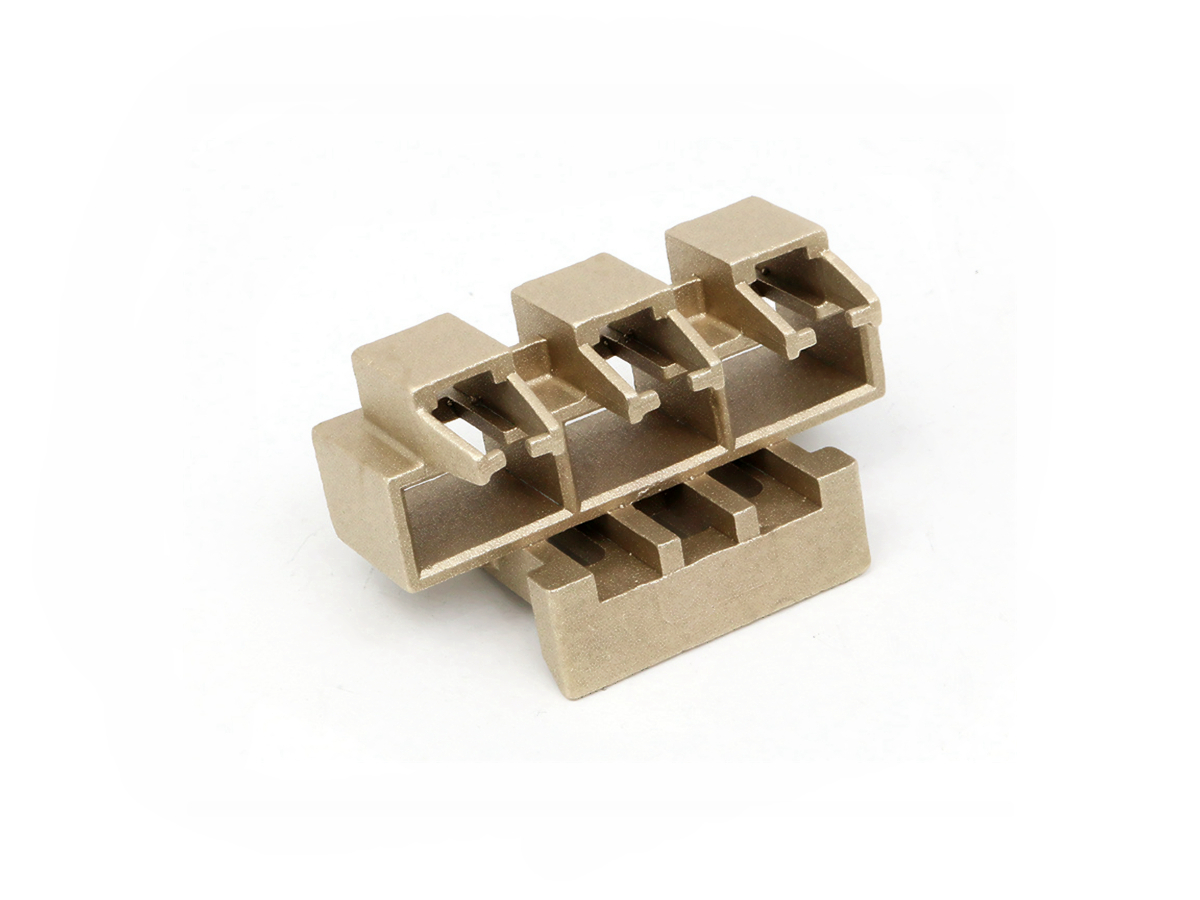Copper Brass Rapid Molding for Electrical Connectors and Custom Mechanical Parts
Introduction
Rapid molding of copper and brass provides efficient solutions for manufacturing precision electrical connectors and custom mechanical parts. Leveraging advanced rapid molding techniques, industries such as electronics, automotive, and industrial equipment can swiftly produce intricate parts with high dimensional accuracy (±0.05 mm) from specialized alloys like Copper C110, Brass C360, and Brass C385.
Copper and brass rapid molding delivers superior electrical conductivity, excellent corrosion resistance, and high mechanical strength, enabling faster product validation and efficient scaling to production.
Copper and Brass Material Properties
Material Performance Comparison Table
Material | Tensile Strength (MPa) | Yield Strength (MPa) | Electrical Conductivity (%IACS) | Density (g/cm³) | Applications | Advantages |
|---|---|---|---|---|---|---|
220-280 | 70-250 | 101 | 8.90 | Electrical connectors, terminals | Excellent electrical conductivity, corrosion resistance | |
345-400 | 131-200 | 26 | 8.50 | Precision mechanical parts, connectors | High machinability, good mechanical strength | |
330-375 | 130-165 | 28 | 8.47 | Valves, fittings, custom parts | Excellent corrosion resistance, easy molding | |
1100-1400 | 1000-1300 | 22 | 8.25 | Springs, electrical contacts | Exceptional strength, high fatigue resistance |
Material Selection Strategy
Selecting the optimal copper or brass alloy for rapid molding involves evaluating mechanical requirements, conductivity, and ease of fabrication:
Copper C110: Ideal for electrical connectors demanding maximum conductivity (101% IACS), commonly used in terminals and connectors for electronics.
Brass C360: Preferred for precision mechanical parts requiring excellent machinability and moderate strength (up to 400 MPa), suitable for custom mechanical and electrical components.
Brass C385: Recommended for applications requiring good corrosion resistance and ease of molding, such as custom valves, fittings, and complex-shaped components.
Copper C172 (Beryllium Copper): Optimal for high-strength electrical contacts and springs, offering tensile strengths up to 1400 MPa, and superior fatigue resistance.
Rapid Molding Processes for Copper and Brass Components
Rapid Molding Process Comparison
Rapid Molding Process | Accuracy (mm) | Surface Finish (Ra µm) | Typical Uses | Advantages |
|---|---|---|---|---|
±0.05 | 0.8-3.2 | Electrical connectors, mechanical fittings | High dimensional precision, suitable for large volume | |
±0.1 | 1-6 | Complex-shaped connectors, small precision parts | Excellent detail and accuracy, fine surface finish | |
±0.3 | 10-25 | Large mechanical parts, low-volume prototypes | Cost-effective for complex, large parts |
Rapid Molding Process Selection Strategy
Choosing the appropriate rapid molding process requires consideration of component complexity, accuracy needs, and production scale:
Die Casting (ASTM B176): Ideal for producing high volumes of electrical connectors with tight dimensional tolerances (±0.05 mm) and consistent mechanical properties.
Investment Casting (ASTM B584): Best suited for intricate parts with detailed geometries requiring high accuracy (±0.1 mm) and superior surface quality, commonly applied in precision electrical components and custom parts.
Sand Casting (ASTM B26): Suitable for prototypes or larger mechanical parts, economically viable for low-volume production despite moderate accuracy (±0.3 mm).
Surface Treatments for Copper and Brass Components
Surface Treatment Comparison
Treatment Method | Surface Roughness (Ra µm) | Corrosion Resistance | Electrical Conductivity Impact | Applications | Key Features |
|---|---|---|---|---|---|
≤0.5 | Excellent (ASTM B912) | Minimal impact | Electrical connectors, high-precision components | Ultra-smooth surfaces, enhanced conductivity | |
0.8-2.0 | Superior (ASTM B545) | Enhanced | Electrical terminals, connectors | Improved solderability, corrosion resistance | |
0.5-1.5 | Excellent (ASTM B689) | Slight reduction | Mechanical parts, fittings | Enhanced corrosion and wear resistance | |
0.5-1.0 | Excellent (ASTM A967) | No significant impact | Precision components, custom hardware | Increased corrosion resistance, cleaner surfaces |
Surface Treatment Selection Strategy
Proper surface treatments significantly improve corrosion resistance, electrical properties, and functional performance of copper and brass molded parts:
Electropolishing: Preferred for electrical connectors requiring smooth surface finishes (Ra ≤0.5 µm), ensuring minimal conductivity loss.
Tin Plating: Recommended for electrical connectors and terminals needing excellent corrosion resistance, enhanced solderability, and maintained conductivity according to ASTM B545 standards.
Nickel Plating: Ideal for mechanical components demanding high corrosion and wear resistance, slightly reducing conductivity but significantly extending service life.
Passivation: Optimal for maintaining clean, corrosion-resistant surfaces, essential for precision mechanical and electrical applications per ASTM A967 standards.
Typical Prototyping Methods
Rapid Molding Prototyping: Quickly generates accurate prototypes (±0.05 mm) suitable for functional testing of electrical connectors.
Copper Alloy CNC Machining: Precisely refines molded components (±0.005 mm tolerance) for custom high-precision electrical and mechanical parts.
Copper Alloy 3D Printing: Efficiently creates complex geometries (±0.1 mm accuracy) for initial design validation and functional assessments.
Quality Assurance Procedures
Dimensional Verification: Advanced CMM inspection ensuring accuracy up to ±0.002 mm (ISO 10360-2).
Mechanical Testing: Tensile strength assessments compliant with ASTM E8 standards.
Electrical Conductivity Testing: Conductivity verification aligned with ASTM E1004 standards.
Surface Roughness Analysis: Profilometry inspections maintaining surface finishes ≤3.2 µm (ISO 4287).
Corrosion Resistance Testing: Salt spray testing exceeding 500 hours, according to ASTM B117.
Non-Destructive Testing (NDT): Ultrasonic (ASTM E2375) and radiographic (ASTM E1742) inspections to confirm structural integrity.
Quality Management Compliance: Full adherence to ISO 9001 standards for consistent, repeatable quality.
Key Industry Applications
Electrical connectors and terminals
Automotive electronic components
Precision mechanical fittings
Custom hardware and assemblies
Related FAQs:
Why are copper and brass ideal for electrical connectors?
Which rapid molding methods offer the best precision for copper parts?
How do surface treatments improve brass electrical components?
What quality standards apply to copper rapid molded parts?
What industries commonly use copper and brass rapid molding?

